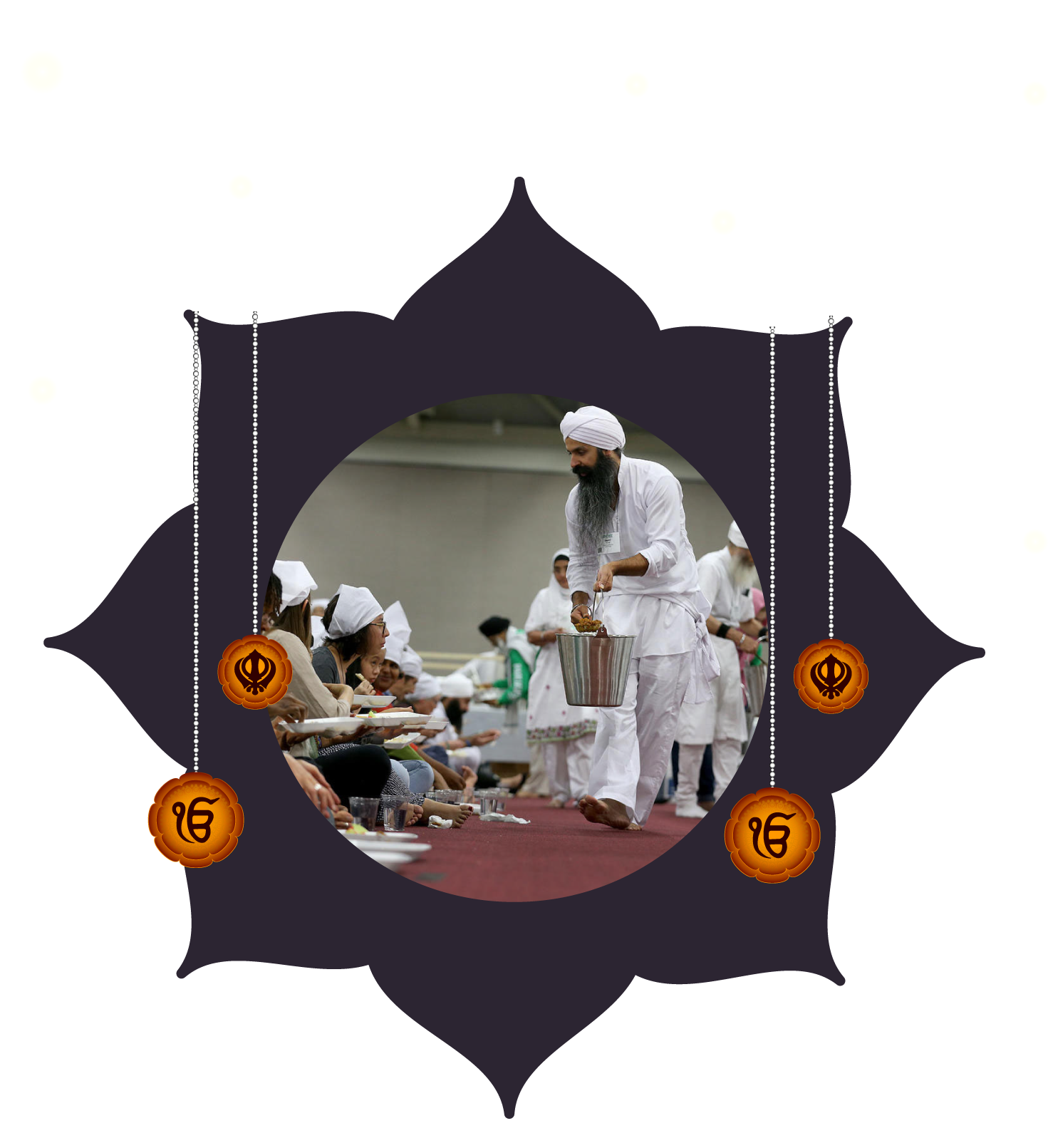
Many of you might have observed that many gurdwaras have always stepped forward to provide food and shelter to those in need. Wherever the need arose, whether in India or abroad, we could find the Sikh community assisting people in the best way possible. Have you ever wondered how that is accomplished? The food provided is known as Langar, and the practice of distributing langar is not new. It is being practiced from a long period ago.
Langar, which translates as "an almshouse" or "a place for the poor and needy" in Persian, is a Sikh community kitchen. The idea behind Langar is that anyone in need of food, regardless of caste, class, religion, or gender, is always welcome as the Guru's guest. Langar teaches equality and loving-kindness in addition to the virtue of sharing. Following a visit to the Guru, i.e. Guru Granth Sahib, devotees or the Guru's guests sit on floors together in lines known as Pangat and are served with Langar. If you've ever eaten Langar at a Gurudwara, you'll know that there is no Daal in the world that tastes better than "Langar wali daal." The menu is usually followed all over the world and includes dal, chapatis, one type of sabzi, and some kheer.
While the concept of Langar has proven to be life-saving for many people, it is primarily life-sculpting for the Sikh community because even preparing this meal teaches many values. That is why, in addition to serving, preparing the Langar is also enjoyable and sends a strong message of unity and 'Sewa' (service). Families gather at their local gurudwaras to begin preparations for occasions such as Gurpurab and Baisakhi. The view is as stunning as one could imagine. On the one hand, you can see men and women cutting vegetables for daal and sabzi, and on the other, you can see grandmothers preparing dough for chapatis and teaching young children how to give the chapatis the perfect round shape.
Sharing the Sewa by assisting one another and then serving food to strangers with eyes full of compassion and mouths uttering the Guru's name, the children and adults learn the lessons of humanity and love on a daily basis. While every gurudwara has a small or large kitchen, The Golden Temple's kitchen is the largest yet. Every day, it serves over 1 lakh people. And the kitchens are open 24 hours a day, 365 days a year.
It is said that when Guru Nanak was a child, his father gave him 20 rupees and told him to go to the market to do 'Sacha Sauda' (a good bargain). His father was a well-known trader in his village, and when Guru Nanak was only 12 years old, he wanted him to learn the family business. Instead of making a worldly bargain, the Guru spent the money on food and fed a large group of saints who had been hungry for days, calling this the "true business." The Guru Granth Sahib, the holy book kept in all gurudwaras, contains such meaningful Guru teachings and is revered by Sikhs.
One of the ideas dearly adopted and followed by taking lessons from Guru's teachings and actions are, "Naam Japo," "Kirat Karo," and "Vand Chhako," which mean, meditate on the Guru's name, lead an honest life, and earn an honest and dedicated living by walking on the path that the Gurus have made for us, and finally, share what you eat. These three main pillars of Sikhism are the reason why Gurudwaras prioritize humanity and serving those in need.
Source: https://bit.ly/3xLqLOO